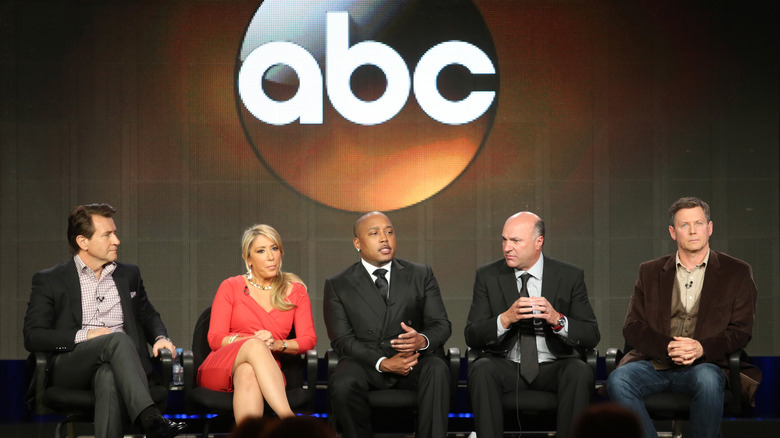What Happened To Ionic Ear After Shark Tank?
ABC's Shark Tank has provided up-and-coming entrepreneurs the opportunity to obtain investments from veteran business tycoons for over a decade. The multiple Emmy Award-winning reality show has seen countless deals made throughout its 14 seasons. Several businesses that found investors on the show made millions, while some were not so lucky.
Shark Tank has also had more than its fair share of unique products presented on it. To give you some perspective, a faux golf club you can urinate in, stick drawings of cats, and even a working Transformer suit are all actual products showcased in front of the Sharks. The crazy thing is, some of these products found investments on the show, with both UroClub and I Want To Draw A Cat For You getting deals done with the investors Kevin Harrington and Mark Cuban, respectively.
But sometimes, a business pitch is so bananas that it literally gets laughed off the show. The Ionic Ear was pitched to the Sharks on the first episode of the entrepreneurial show. It proved to be too unrealistic and bizarre for any of the veteran investors on the panel, and to this day, the product is still one of the strangest products brought on Shark Tank.
What is the Ionic Ear?
The idea behind the Ionic Ear was not without merit. Wearing Bluetooth headphones can sometimes be a real pain, and moving with them has a high chance of the cans getting jostled around, disturbing your listening experience. Inventor Darrin Johnson wanted to solve this issue permanently and came up with the idea of a Bluetooth device that was to be surgically attached to the human ear. The Ionic Ear was meant to stay on your ear securely and included a microphone and a receiver, just like most Bluetooth headphones.
The first catch came with how the device was to be implanted in a human ear. It required surgery to install, and the device would be affixed inside the ear canal. Since the device is obviously wireless, it would also require regular charging. This means you must connect the device inside your ear canal to a wall outlet and stay put for a few hours.
Johnson came in wanting a $1 million investment in exchange for 15% of the company. The surgical requirement and the outright unbelievability of the product left the investor panel unimpressed. Robert Herjavec, the only Shark willing to hear the pitch, hilariously stated, "Darrin, here's insanity, here's genius... you're somewhere."
How is it doing now?
Many businesses on Shark Tank that didn't secure investors continue trying to bring their products to market, and some even thrive. Case in point: DoorBot, a company manufacturing video doorbells, got no investments on the show but was later rebranded as 'Ring' and acquired by Amazon for a cool $1 billion. The Ionic Ear was not so fortunate, with no records of the company to be found today. It might be safe to assume that the company conceded defeat due to difficulty obtaining government approval and finding willing customers to undergo surgery.
Products that make it onto the show usually get a lot of exposure, leading to a boom in demand even if no deal ever materializes with a Shark. The Ionic Ear did not replicate this either, its concept evidently troubling consumers as much as it did the Sharks. The company appears to be out of business, and recent news about the product or the inventor himself is scarce.
Even if this product did not impress many in 2009, there's a chance it might have been more accepted today. Elon Musk's company Neuralink, which hopes to surgically implant a chip in the human brain, recently got approval from the FDA to conduct its first human trials. It certainly is possible that the Ionic Ear and Darrin Johnson were merely ahead of their time.

